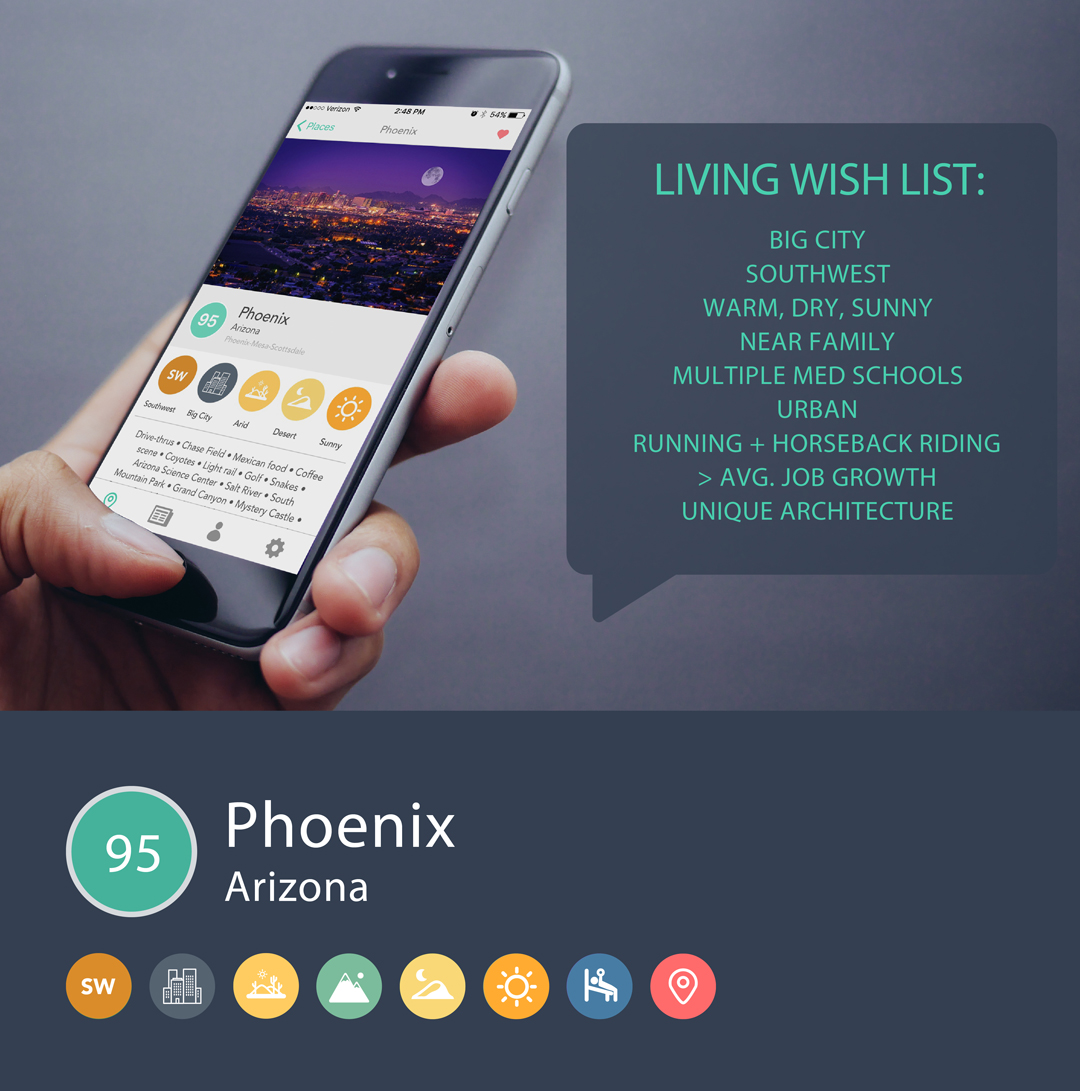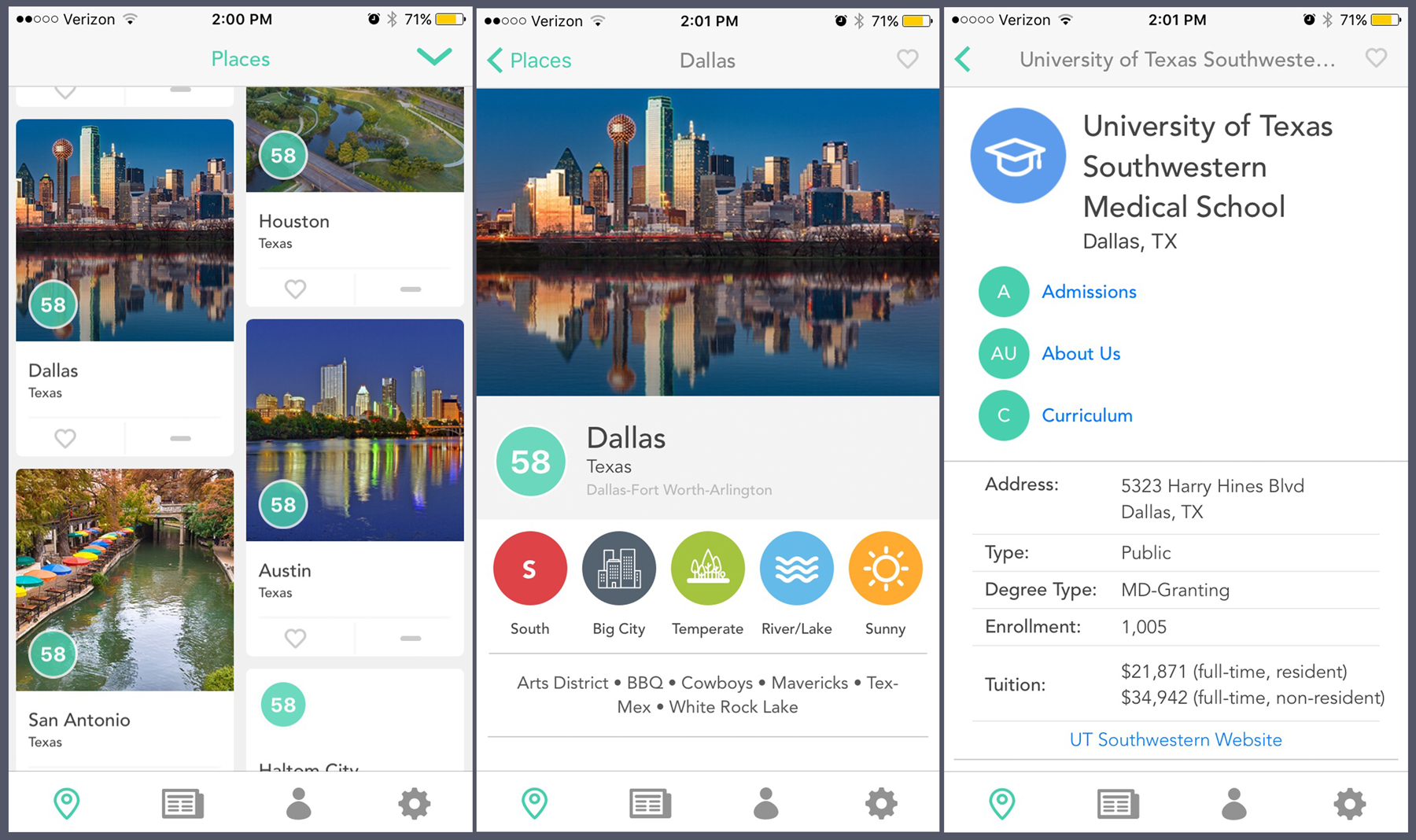When pre-med and medical students think about where to attend school or where to apply for residency opportunities, they undoubtedly consider the hard work, dedication and sacrifices required along the way. But how often are they thinking about location in this process? Aspiring physicians often overlook geography in their career pursuit and end up missing out on perfect opportunities. That’s where (To) aims to help.
(To) Where Matters is a free mobile app created to help pre-med and medical students find the best schools and residency programs based on personal location preferences. Although a nontraditional topic for medical professionals, location plays a key role in decision-making and can change how you’ll spend the rest of your life.
Take, for example, Lisa, a pre-med student from Texas who knows she would like to pursue a career in medicine but isn’t sure where to apply or which specialty to pursue. Beyond taking the MCAT and making sure her USMLE scores are in tip-top shape, how does Lisa figure out where is best based on her career interests? First, it’s important for Lisa to understand what’s available in her own backyard because the advantages of pursuing in-state education over time can serve as multipliers for success: cost, residency training and practice location may all be significantly affected.
So where does Lisa begin her search? (To) is a great starting point, because it compares all medical schools (both MD and DO programs) in the United States based on location. When searching by state in the app, Lisa can quickly compare the 11 different programs available in her home state of Texas. She can perform side-by-side comparisons of schools and find links to their personal websites. This helps Lisa see that some schools, like Texas A&M Health Sciences, offer training opportunities throughout the state as part of the curriculum, essentially a localized study abroad opportunity. Others, like Baylor or McGovern Medical School, have appealing dual-degree programs in public health — even law — to complete alongside your medical degree. With (To), Lisa can filter her possibilities by admissions requirements, private vs. public, degree type, tuition and more — all anchored in location.
Residency is also a tough process to navigate and entails mixed emotions and tireless hours spent on applications and site visits. The limited number of positions available often makes finding the right program highly competitive and tedious. Students spend an exorbitant amount of money, energy and time on the residency application process, flying across the country to previously unknown institutions. Such uncertainty is concerning; if a location doesn’t feel right, chances are you won’t be happy no matter how good the job. (To) can help rising physicians prioritize possibilities so that good fits (or bad ones) are clear from the start.
In several cases, (To) has been compared to the AAMC’s Medical School Admission Requirements (MSAR) system. Differences, however, include: (1) (To) is free for users so there is no cost barrier to the search for the best fit; (2) (To) represents all schools, meaning all DO and MD universities in the United States and thus provides a means for comprehensive exploration and comparison before deciding if allopathic or osteopathic is right for you; and (3) (To) capitalizes on aspects of the MSAR that fall short, particularly user experience and access to location information. (To) clarifies the connection between med schools and training programs, location-based requirements for ‘getting in,’ offers greater mobile device compatibility and its soon-to-be released features will provide a means for students and trainees to connect directly with program advisors and administrators. (To) has the potential to become the kind of product that can facilitate everyday decisions (where to live once you’re accepted, where med students hang out) or meet long-term planning needs (where career interests and personal needs are best served).

Amee, the “girl on our marketing materials,” was the inspiration and impetus for (To). She was our CEO’s (Sarah Linden’s) roommate in college who took a non-traditional route to becoming a physician by first becoming a registered nurse. Amee always understood the importance of location in decision-making, ensuring that where she was or wanted to be aligned with her ‘life’ priorities: finding a community where she could go for a run after work and identifying the right loan forgiveness opportunities available for her specialization as a pediatric intensivist. She completed her residency in Akron near family and is currently a second year fellow at the Medical College of Wisconsin. It was the process by which medical students at all stages of their careers, like Amee, explore location that inspired (To). Information critical to lifestyle is often difficult to sieve through or hard to understand and (To) aims to fill this obvious void.
To learn more about (To), visit the official website or the App Store.



